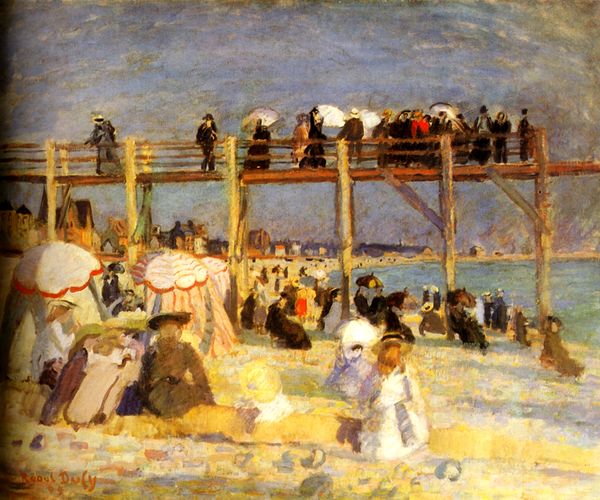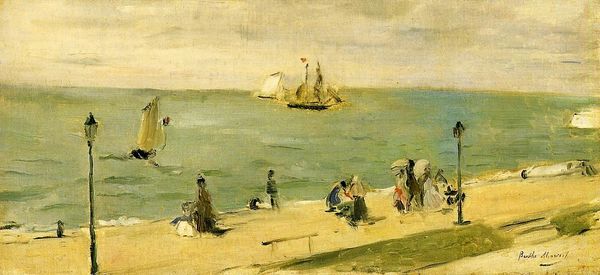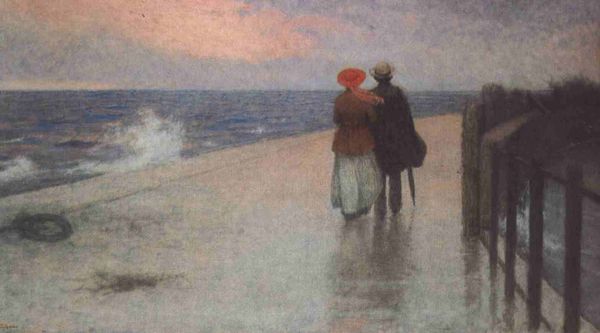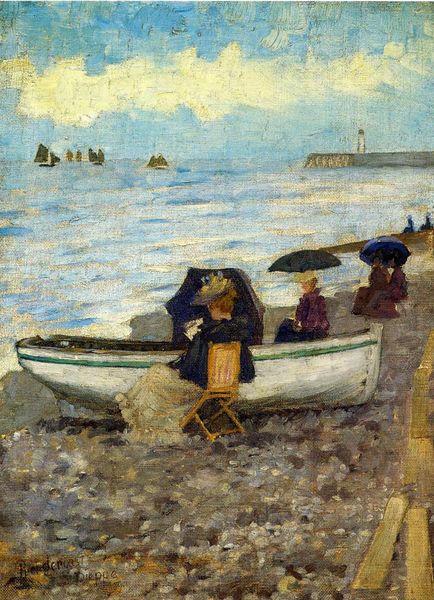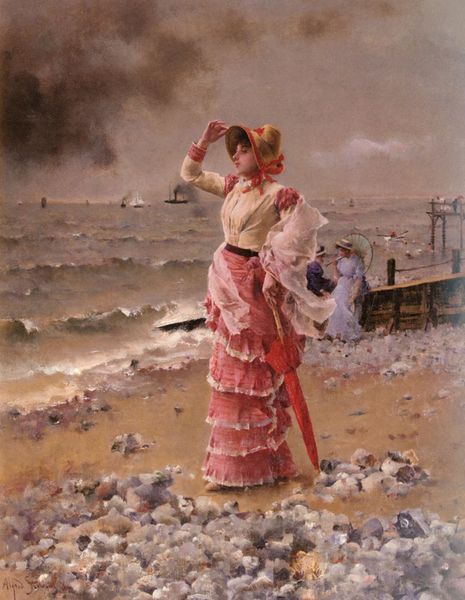
Dimensions: support: 603 x 761 x 15 mm frame: 807 x 968 x 87 mm
Copyright: CC-BY-NC-ND 4.0 DEED, Photo: Tate
Editor: Here we have Philip Wilson Steer’s painting, "The Beach at Walberswick," housed at the Tate. The texture of the paint is quite visible, and I’m struck by the arrangement of figures and the landscape. How do you interpret the composition? Curator: The composition’s strength lies in its subtle interplay of horizontal and vertical lines. Observe how the horizon is echoed in the hemlines and the figures aligned along the beach path. How do these formal elements create a sense of depth and spatial tension? Editor: The way you point out the lines really brings out a feeling of balance. It's not something I would have picked up on right away. Curator: Indeed, it is in the close visual analysis that the painting begins to speak. Hopefully, you can now find new ways to approach art. Editor: I am now looking forward to using the method of close visual analysis on my own.
Comments
tate 7 months ago
⋮
http://www.tate.org.uk/art/artworks/steer-the-beach-at-walberswick-n05351
Join the conversation
Join millions of artists and users on Artera today and experience the ultimate creative platform.
tate 7 months ago
⋮
Steer made many visits to Walberswick in Suffolk, where he had friends. He completed a number of paintings of the beach there that are among the most authentically Impressionist works produced in Britain. They are all fluidly painted and concentrate upon effects of atmosphere and light but, unlike Monet, Steer was just as interested in the figures as their setting. When paintings like this were exhibited for the first time in Britain the 1880s and 1890s they were seen as being uncompromisingly avant-garde. One critic in 1892 even described such works at the New English Art Club exhibition as 'evil'. Gallery label, September 2004




